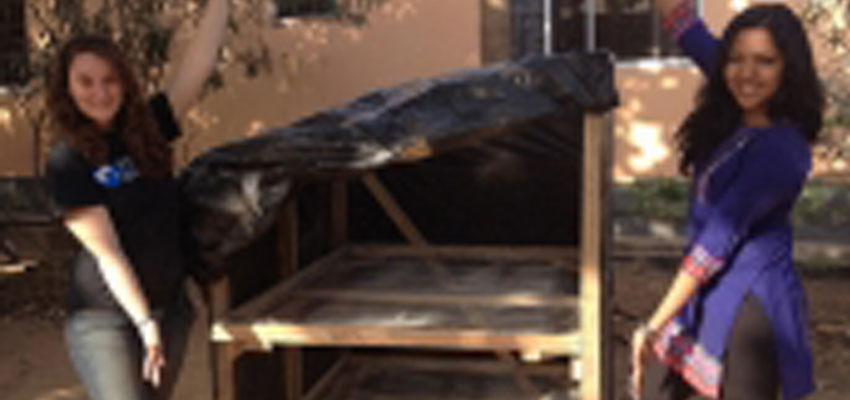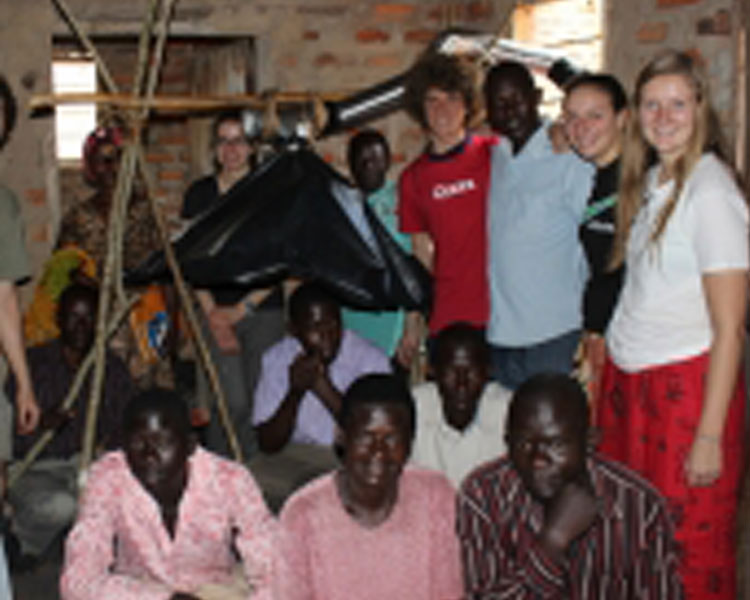
Each year during MIT's Independent Activities Period (IAP), D-Lab classes send more than 50 students to the field to put into practice what they've learned throughout the semester. Each year, students come back with stories of eye-opening experiences and encounters. In this post, three students share some of what they learned through working with locals, dealing with cost constraints, and living and interacting with people in their partner communities.
Fernando Ruiz - Uganda:
While on my trip, I enjoyed working together with the locals to complete our building projects. At first it was very hard to keep up with them due to their skill at using hammers, saws, and general knowledge on building. After a couple of days I learned how to use these tools and gained valuable insights on how to be resourceful. The people we were working with impressed me in the way they used their limited and poor quality materials. They knew how to conserve their resources while working around the flaws of their building materials. I also learned the value in my resources at MIT. Here, I have workshops filled with power tools and supply rooms filled with building materials. Working under limited conditions forced me to improvise and to innovate solutions. I learned so much from the people I was working and respected them all as engineers and innovators.
Another fundamental part of the trip was the genuine hospitality that was shown toward the group in every place that we visited. Wherever we went we were greeted with open arms and exclamations of joy. I expected to feel slightly uncomfortable meeting new people because I looked and felt like such an outsider. I was pleasantly surprised to feel at home wherever I went; it was exciting to be the center of attention everywhere I went. People would want to hear about our thoughts and opinions, our home, and past experiences. They were genuinely curious about the differences in our cultures. I loved learning about Ugandan culture and meeting people that I could become close to regardless of our large differences. On the trip, I learned that it is the differences that we have that make us human.
Holly Josephs - Ghana:
One of the most stand-out incidents happened with a stranger during dinner one night. We were in a restaurant and began to talk with two people at the table next to us. We got to talking about moringa and they couldnʼt stop talking about how they were so happy to have been able to have this opportunity for information exchange because now they will be able to use moringa (which grows in their village but nobody uses) and help their families learn how to use it as well. It felt like someone was confirming that our goals for the project were being achieved.
I felt that I gained a greater understanding of development work in general from the class and the trip. Last year, I had wanted to go to Nepal to work on a water sanitation project. I was not funded to go, but I think that it turned out for the better. I wouldnʼt have known how to be effective. Even now, Iʼm sure Iʼm far from being as effective as I possibly could be in development work. However, I think that comfort with the work/projects is a huge part of it, and comfort only can come from experience. I now feel like I am in a position where I could independently plan and implement a project.
Elana Ben-Akiva – Zambia:
In terms of the actual project work, I learned how little money people in the village actually had to spend. For example, I knew that one of our goals was to make a low cost charcoal stove, but I didn’t realize until we were there that “low cost” essentially meant “no-cost” if we wanted it to be affordable for the people living in the village. Additionally, when we were making a chimney for the kiln, I suggested that we make a removable chimney out of sheet metal, which would make the sealing process easier. However, Robert and Stephen [local Zambian alumni of the most recent International Development Design Summit informed me that sheet metal was much too expensive for the villagers. We tried to brainstorm other materials but found that the only viable option was to use bricks. I was not expecting that we would be so limited in terms of materials, but I was surprised by what we were able to accomplish using just bricks. Plus, it was rewarding to build something that was ultimately affordable.
I also discovered that you don’t necessarily need to have a formal engineering education in order to be a successful engineer or inventor. In working with Robert and Stephen, I was very grateful for the practical intelligence they brought to the project and the innovative design ideas they came up with, especially when it came to reducing costs and finding ways to recycle different materials. I’m not sure what we would have done without them.
-------------
Photos: 1) Students and community members around a handmade rig to test emissions from indoor cookstoves in Uganda. 2) Team Uganda packs a drum to carbonize biomass for charcoal. 3) Members of the Ghana-Moringa team celebrate the competion of a handmade solar dryer. 4) Community members in Ghana experiment with different uses of moringa oil. 5) Members of team Zambia and community partners with their completed brick kiln. 6) Constructing a grinder for making charcoal from agricultural waste in Zambia.






